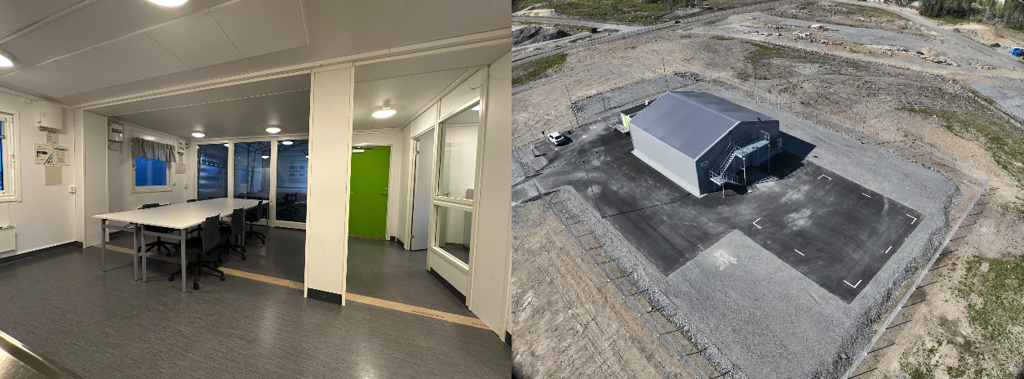Where electric aviation takes flight
Meet Henrik Littorin, Program Manager at Arctic Aviation Hub, our partner within eMobility.

With 20+ years of experience in aviation, strategy and sustainability, Henrik came to Skellefteå to build something new.
– There’s a rare mix here. A proactive municipality, an own airport, an energy company, an innovation hub. Add LTU, battery production, a cold climate and wide-open skies – and you’ve got the perfect place to pioneer electric aviation.
Henrik played a key role in launching Arctic Aviation Hub – an initiative led by Skellefteå Science City in close collaboration with Skellefteå Airport, supported by Skellefteå Municipality, Skellefteå Kraft and Skellefteå Airport. The focus: testbeds, research, and commercial innovation. So, you can probably see why we've joined forces.
From electric aircraft to drones
The journey started with electric aircraft. Skellefteå Airport now has a very powerful charging infrastructure for electric aircraft (1 MW) and ranks top three globally in electric flight movements – thanks to Green Flight Academy.
– They called just as we finished the charging station – and established here. Today they train pilot students from all over Europe and beyond.
As aircraft tech took longer to scale, attention turned to drones that’s already in use and evolving fast. Tests with long-range drones revealed the limitations of flying within a control zone. The solution? A dedicated droneport.
Opening June 10: Skellefteå Droneport
Skellefteå Droneport is a unique drone airfield 2 kilometers from the city, designed for real-world testing, education and innovation. It features a hangar, charging possibilities, classroom, offices and a 15x15 meter launchpad.
– It’s like a playground in a controlled environment. A place for collaboration.
The droneport in Skellefteå will serve as a central node for drone services with real societal value – from fire assessments and rooftop inspections to future emergency operations. But scaling it takes more than tech.
– We need testing, new business models and the right skills. That’s one part where ACE comes in. We’re facing challenges that require advanced knowledge: we can’t just send someone out to the airport to fix a transformer. Cybersecurity is also critical, as drones could be used to disrupt essential societal functions. That’s why we see ACE as a key driver and partner in helping us move forward.

The power of collaboration
Henrik highlights three key hubs that make Skellefteå a stronghold in electric aviation:
- Skellefteå Airport – with charging infrastructure and Green Flight Academy.
- Skellefteå Droneport – for testing and commercialising drone solutions.
- ACE and Campus Skellefteå – for research, skills and cybersecurity.
– Thanks to everything we’re doing together, both locally and through ACE, Skellefteå is truly at the forefront. The combination of test sites, labs and people lets us go from idea to implementation in one place. That’s unique.
The goal in ten years is to establish a regional electric network across northern Sweden and Norway, integrated with electric buses, airplanes and autonomous vehicles.
– Once a 6- or 9-seater electric aircraft with a 400–500 km range hits the market, Skellefteå will be one of the first places in Europe ready to adopt it for commercial use. If it works here, it works anywhere. It’s like a quality stamp: invented in Skellefteå, finishes Henrik.
Want to be part of the future of electric aviation?
Talk to Marcus Björling, our Program Manager in eMobility. He can also connect you with Henrik Littorin.




